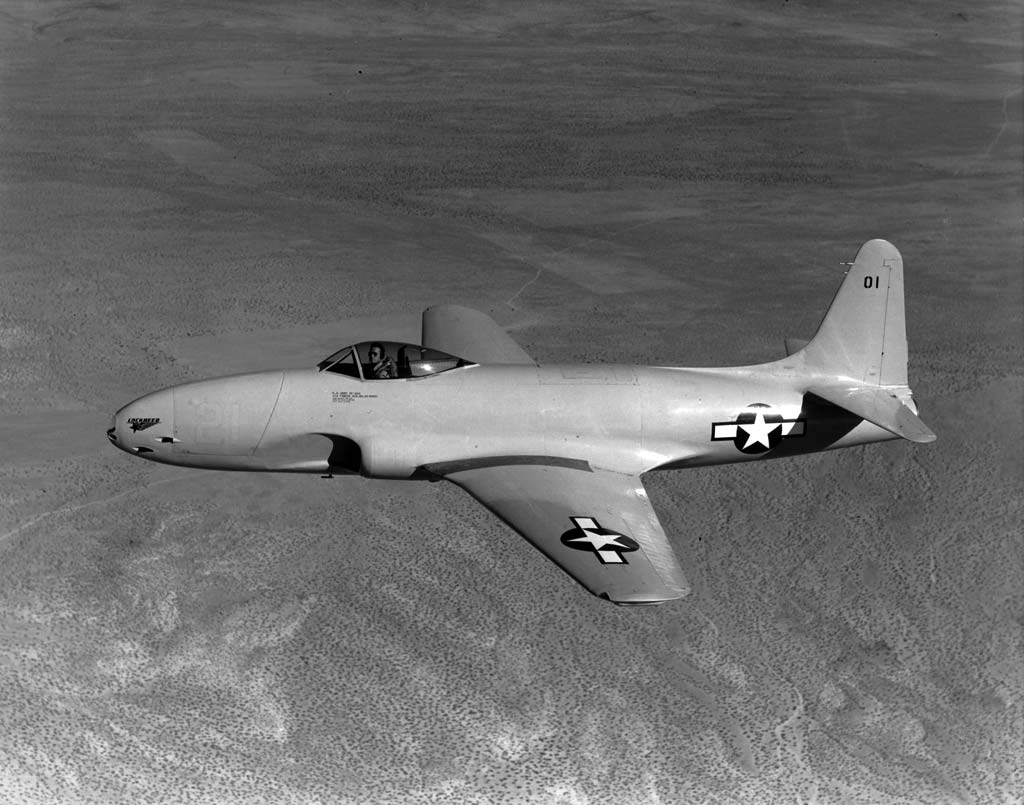The United States wasn’t the first country to develop a jet-powered fighter aircraft, but it was definitely the first in which a pilot flew wearing a gorilla mask and derby hat while holding a cigar.
It seems the test pilot for what would become the Bell P-59 Airacomet had a pretty robust sense of humor.
Sadly, not everyone got the joke – especially those who didn’t know what the P-59 was. All they saw was a mysterious, fast-moving aircraft flown by a comical gorilla, in the skies over a secret aircraft testing area in the middle of World War II.
If you think about it, it’s actually not that bad of an idea. If you’re flying a top secret, experimental airplane in the middle of the day when other pilots are in the air, it makes sense to help create a story so outlandish that no one on the ground would ever believe it.
In 1942, the Bell P-59, the United States’ first jet engine fighter aircraft, took to the skies for the first time. It was America’s entry in the race for an operational jet-powered fighter for use in the war. Britain’s Royal Air Force was already a year into developing its fighter, and Nazi Germany had been testing one since 1939.
Bell Aircraft’s senior test pilot was Jack Woolams, a veteran of the U.S. Army Air Corps, fearless record setter and renowned practical joker. Had he not died in a postwar plane crash in 1946, he would have been the first person to break the sound barrier in the Bell X-1 rocket plane, instead of
Chuck Yeager.
Woolams tested a number of aircraft for Bell during WWII, but none of them would see service with the United States. Instead, most ended up in the Soviet Air Force, where prop-driven planes like the P-39 Airacobra were used to decimate the German Luftwaffe on the Eastern Front.
The P-59 Airacomet, however, was never going to end up in the hands of the USSR. Its existence was a closely guarded secret, one that only the British knew about, because they lent the U.S. their jet engine designs.
In order to keep it secret, American airmen would use some pretty creative deception tactics to dupe outsiders (and potential spies) who might be looking for anything unusual on the flightline. The Airacomet was often fitted with a fake propeller on its nose, so it wouldn’t stand out while taxiing.
Woolam’s practical jokes on the ground continued even while he was in the air, according to author Sterling Michael Pavelec’s book “
The Jet Race and the Second World War.” While flying the only jet aircraft in the skies over the United States, a plane no one else in the air knew about, he would join formations of propeller planes wearing the gorilla mask and derby hat, holding a “stogie.”
It’s important to remember that pilots had a pretty good view of one another at this time in aviation history, and the sight of a gorilla flying a plane with no propeller – which pilots believed was necessary for flight – must have been more than a little surprising.
The P-59 Airacomet would ultimately never be used in combat. Germany was the only belligerent country of WWII whose jet fighter became operational during wartime, but this came much too late to affect the outcome of the war.
Still, its speed and maneuverability made piston engine planes obsolete. By the time the U.S. entered its next major conflict, the skies over those battlefields would be dominated by jet engines.




